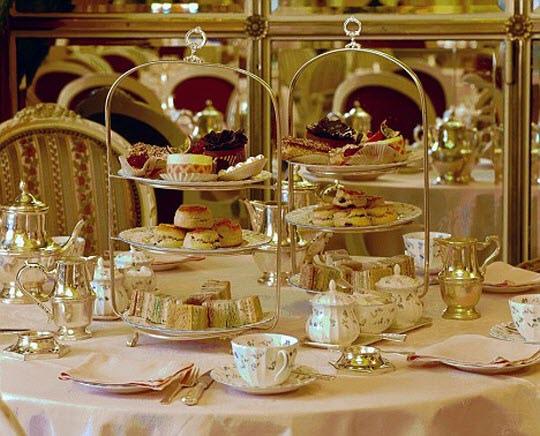Why there's always time for tea
Quintessentially English, and with its roots in a bygone, unhurried era, afternoon tea is a blast from the past that’s making a comeback, says Julia Platt Leonard

Your support helps us to tell the story
From reproductive rights to climate change to Big Tech, The Independent is on the ground when the story is developing. Whether it's investigating the financials of Elon Musk's pro-Trump PAC or producing our latest documentary, 'The A Word', which shines a light on the American women fighting for reproductive rights, we know how important it is to parse out the facts from the messaging.
At such a critical moment in US history, we need reporters on the ground. Your donation allows us to keep sending journalists to speak to both sides of the story.
The Independent is trusted by Americans across the entire political spectrum. And unlike many other quality news outlets, we choose not to lock Americans out of our reporting and analysis with paywalls. We believe quality journalism should be available to everyone, paid for by those who can afford it.
Your support makes all the difference.On paper, afternoon tea should be extinct, a relic of a slower time before email, social media, and Netflix took over our lives. Does anyone really have the time in the middle of the afternoon to switch off and pour a second cup of Darjeeling tea while nibbling on a crustless cucumber sandwich? Actually, it turns out that a lot of us do and we’re defying our 24/7 world by carving out a bit of screen-free time to prove it.
The practice of afternoon tea dates back to 1840 and Anna, the 7th Duchess of Bedford. At the time, there were typically two main meals of the day: breakfast and dinner. Anna, probably like many, felt a bit peckish in the afternoon and ordered tea and slices of bread and butter to tide her over. Friends were invited to join her and soon it was ‘“the thing”, often followed by a brisk stroll outdoors.
Today, afternoon tea might conjure up images of Miss Marple, sensible shoes and plates of scones, and that may not be a bad thing, according to master pâtissier and author of Afternoon Tea, Eric Lanlard. “If you go down to the countryside, it hasn’t changed that much and that’s what I like about it, to be honest. When I go down to Cornwall and Devon or the middle of nowhere and you see the sign for cream tea or afternoon tea, you know what to expect.”
But if you’re hungry for something different, then you’re spoiled for choice. Today you can sample a Suffolk cream tea while on board the sailing barge Victor cruising on the River Orwell in Ipswich. Or, if you’d like something more literary, there is the Mad Hatters Tea Party at the Sanderson Hotel in London, where you can sip Alice’s cinnamon, apple and peach “Drink Me” potion (or a glass of bubbles for the adults in the group).
For Lanlard, afternoon tea brings back memories of travelling from France to the UK and having afternoon tea with his Mum. It’s all about the glamour that makes it something special. “Mention the words afternoon tea and even if you’re in a canteen or on a train and they say, ‘We’re going to serve afternoon tea,’ immediately you want to sit up properly and wear something nice to it.”
What’s the recipe for the perfect afternoon tea? A nice setting, good company and time to relax, he says. “Everything is laid out in front of you and you get all the beautiful cutlery and silverware and teas and that’s what I really like about it – that unrushed moment.”
It’s the spirit that he aims to capture at his south London café, Cake Boy. “It’s really, really popular. I remember someone saying that afternoon tea is the new lunch and I kind of agree. I much prefer to go and celebrate with someone for afternoon tea rather than a rushed lunch somewhere.” Afternoon tea can cost the same as lunch out and restaurateurs are less likely to need to turn the table, so there isn’t a feeling of being hurried back out the door.
Afternoon tea isn’t just a British institution anymore. We’ve successfully exported it to countries everywhere so it’s become a worldwide phenomenon. And it’s not all about the sandwiches and sweets. More hotels and restaurants are thinking about the tea they serve. Lanlard encourages diners to try different teas with different dishes – as you would with wine. So perhaps a white tea with a soft and subtle flavour at the beginning of the meal and something more robust, like an earthy tea from Kenya, for a richer, savoury dish.
And what are his top picks for afternoon tea?
- Claridges, London (“iconic”)
- The Goring, London (“a British tradition”)
- St Regis, Abu Dhabi (“an exotic treat”)
- The Royal Crescent, Bath (“my favourite hotel”)
Afternoon Tea by Eric Lanlard (Mitchell Beazley)
Join our commenting forum
Join thought-provoking conversations, follow other Independent readers and see their replies
Comments